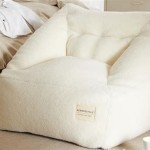Best Living Room Decor Colors: A Comprehensive Guide
The living room serves as a central hub within a home, often functioning as a space for relaxation, entertainment, and social interaction. Selecting the appropriate color palette for this area is crucial in establishing the desired atmosphere and reflecting the homeowner's personal style. The impact of color extends beyond mere aesthetics; it can influence mood, perceived size, and the overall comfort level of the space. This article provides a comprehensive exploration of various color options suitable for living room decor, examining their psychological impact, design principles, and practical application in different home settings.
Before delving into specific color recommendations, it's essential to understand the fundamental principles of color theory. The color wheel categorizes colors into primary (red, yellow, blue), secondary (green, orange, purple), and tertiary hues (combinations of primary and secondary colors). Understanding color relationships, such as complementary (colors opposite each other on the color wheel), analogous (colors adjacent to each other), and triadic (three colors equally spaced on the color wheel) is fundamental to creating visually harmonious and balanced living room designs.
Furthermore, considering the lighting conditions within the living room is paramount. Natural light tends to enhance colors, making them appear brighter and more vibrant. Artificial lighting, on the other hand, can alter the perceived hue of a color. For instance, incandescent lighting casts a warm glow, while fluorescent lighting often produces a cooler effect. Therefore, it is advisable to test paint samples under different lighting conditions before committing to a particular color choice.
Understanding Color Psychology
Color psychology explores the effects of color on human emotions and behavior. Understanding these associations can aid in selecting a color palette that aligns with the desired atmosphere for the living room. Different colors evoke different responses in individuals. For example, blues and greens are often associated with tranquility and relaxation, making them suitable for creating a calming and serene living space. Reds and yellows, on the other hand, are generally considered more energetic and stimulating, and may be appropriate for creating a more vibrant and social atmosphere. The individual responses to color can be influenced by personal experience and cultural norms, so it is important to tailor the color palette to personal preferences.
Neutral colors, such as whites, grays, and beiges, provide a versatile foundation for living room decor. They offer a sense of spaciousness and allow for the incorporation of bolder accent colors through furniture, artwork, and accessories. Neutral palettes effectively offer a blank canvas that can be adapted for different seasons or design trends. They are less likely to clash with existing architectural elements and offer a sense of timeless elegance. The key to using neutral colors effectively is to incorporate texture and varying shades to avoid a monotonous or sterile appearance.
Warm colors, including reds, oranges, and yellows, are known for their ability to create a cozy and inviting atmosphere. They can make a large living room feel more intimate and welcoming. However, it is crucial to use warm colors judiciously, as excessive use can overwhelm the space. Consider using lighter shades of warm colors or limiting their application to accent walls or accessories, to maintain a balanced and harmonious aesthetic. Furthermore, the intensity of warm colors can impact the room's perceived temperature. Brighter warm hues can make a room feel warmer, which can be an advantage in colder climates but a disadvantage in warmer environments.
Cool colors, such as blues, greens, and purples, evoke feelings of calmness and serenity. They can create a sense of spaciousness and tranquility in a living room. These colors are particularly well-suited for smaller living rooms, as they visually recede and make the space appear larger. Light shades of cool colors can brighten a room. Deeper shades, such as navy blue or forest green, can create a sense of drama and sophistication. When using cool colors, it is important to incorporate warm accents to prevent the room from feeling cold or sterile. Introducing natural materials, such as wood or textured fabrics, can add warmth and visual interest to the space.
Specific Color Recommendations and Their Applications
While personal preferences play a significant role in color selection, certain color combinations and applications consistently prove successful in living room decor. This section will explore several popular color palettes and discuss their practical implementation.
Gray: Gray has become a dominant neutral color choice in recent years, offering a sophisticated and versatile backdrop for a variety of design styles. From light, airy grays to deep, charcoal tones, the options are vast. Light gray walls can create a bright and spacious feel, while darker grays add depth and drama. Gray pairs well with various accent colors, including blues, greens, yellows, and pinks. Consider incorporating textured fabrics and metallic accents to add visual interest to a gray-based living room. The undertones of gray should be considered when choosing accent colors. Warmer grays complement warmer accent colors, while cooler grays pair well with cooler hues.
Blue: Blue is a classic and versatile color that can evoke a range of emotions, from tranquility to sophistication. Light blues create a calming and airy atmosphere, while darker blues add depth and drama. Navy blue is a popular choice for accent walls or furniture, providing a sophisticated and timeless look. Blue complements a variety of other colors, including white, gray, beige, and yellow. Consider incorporating natural materials, such as wood and linen, to add warmth and texture to a blue-themed living room. The shade of blue used is an important consideration. A pastel blue will create a vastly differant atmosphere than a deep navy blue.
Green: Green is associated with nature, growth, and tranquility. It can bring a sense of freshness and vibrancy to a living room. Light greens create a calming and airy atmosphere, while darker greens add depth and sophistication. Olive green is a popular choice for a natural and earthy look. Green pairs well with a variety of other colors, including white, gray, brown, and yellow. Consider incorporating plants and natural elements to enhance the connection to nature. The usage of green can range from a vibrant feature wall to a subtle accent color found in house plants.
White: White remains a timeless and versatile choice for living room decor. It creates a bright, airy, and spacious feel, making it ideal for smaller living rooms. White serves as a blank canvas, allowing for the incorporation of various accent colors and design styles. However, it is important to use white strategically to avoid a sterile or clinical appearance. Incorporate textured fabrics, such as linen or wool, and varying shades of white to add depth and visual interest. The cleanliness of white is crucial, as any blemishes or stains will be immediately apparent. Consider using washable paint for white walls in high-traffic areas. A white living room is very versatile and can be adapted to many different styles.
Applying Color in Living Room Decor
Beyond selecting the primary wall color, the application of color through furniture, accessories, and textiles is crucial to achieving a cohesive and visually appealing living room design. The 60-30-10 rule is a common guideline for creating color balance in a room. This rule suggests using 60% of the space for the dominant color, 30% for a secondary color, and 10% for an accent color. These percentages are a basic guide and should be adjusted to suit personal preferences, but the principle of color balance is important.
Furniture can serve as a significant source of color in the living room. A brightly colored sofa or armchair can act as a focal point, adding visual interest and personality to the space. Consider the existing wall color when selecting furniture colors. Contrasting colors can create a bold and dynamic look, while complementary colors offer a more harmonious and subtle effect. Upholstery choices are also important, as different materials reflect light differently, impacting the perceived color. The size of the furniture should be considered in relation to the colors. A large brightly-colored sofa can easily overwhelm a small space.
Accessories, such as throw pillows, blankets, rugs, and artwork, provide an opportunity to introduce accent colors and patterns into the living room. These elements can be easily changed or updated to reflect seasonal trends or personal preferences. Consider using a variety of textures and patterns to add visual interest and depth to the space. The placement of accessories can influence the overall impact of the color scheme. Strategic placement of brightly colored accessories can draw the eye and create focal points within the room, while thoughtful selection of muted tones will allow a room to feel more tranquil.
Textiles, including curtains, rugs, and upholstery, play a significant role in the overall color scheme of the living room. These elements can introduce patterns, textures, and colors that complement or contrast with the wall color and furniture. Consider the weight and opacity of the fabrics when selecting curtains, as they can impact the amount of natural light entering the room. Rugs can define seating areas and add warmth and visual interest to the space. The color and pattern of the rug should be carefully considered in relation to the other elements in the room. The use of contrasting colors in textiles can create a bold and dynamic look, while harmonious color combinations offer a more subtle and sophisticated effect.

15 Best Living Room Color Schemes Designers Swear By Decorilla Interior Design

85 Beautiful Living Room Ideas That Will Stand The Test Of Time

2025 Living Room Paint Color Trends

55 Best Living Room Color Ideas According To Design Experts

55 Best Living Room Paint Colors From Designers

55 Best Living Room Color Ideas According To Design Experts

55 Best Living Room Paint Colors From Designers

The Most Popular Living Room Colours For 2025

60 Living Room Ideas For Your Home Planner 5d

15 Designer Tricks For Picking A Perfect Color Palette







